

Books About Racism and Social Justice. How to Be an Antiracist Educator. BLM Instructional Library - Google Slides. Race and Equity Resources. Race and Equity Resources (Updated June 5, 2020) School counselors are advocates for the equitable treatment of all students in school and in the community.

For Our White Friends Desiring to Be Allies. Author's Note: I'm writing this in hopes that it can be used to lighten the load of marginalized folks, keeping in mind that not all marginalized people want to engage in the ally conversation, and that is perfect as well.

For those who do, my prayer is that when someone asks you the question, “how can I be a stronger ally?” You might choose to save your breath/energy and send this in its place. I have been asked by two dear friends, “how can I be a stronger ally?” Being the slow emotional processor that I am, I wanted to spend some time with this before I answered them. I surely appreciate and love these two individuals, and I appreciate their vulnerability in asking me this question. I am not going to do much coddling here; I don’t know that I believe that love requires coddling. 1. 2. 3. 4. 5. 6. I love Jesus. It will never be possible for us to be colorblind, and we shouldn’t ever want to be. Yup, now I’m talking about reparations. Privilege means that you owe a debt. 1. 2. 3. Teaching Black History in Culturally Responsive Ways. As Black History Month kicked off, I was reflecting on my time as a student.
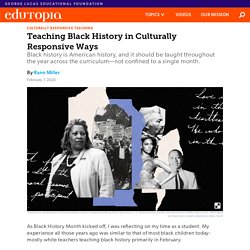
My experience all those years ago was similar to that of most black children today: mostly white teachers teaching black history primarily in February. I was told of Martin Luther King Jr., Harriet Tubman, and Frederick Douglass. I heard very little of Malcolm X, the FBI’s campaign against civil rights leaders, the Rainbow Coalition put together by the Black Panther Party’s Fred Hampton, or Hampton’s assassination. I learned about the struggles of my enslaved ancestors, but not about Gabriel Prosser, Denmark Vesey, or Nat Turner. Equality Is Not Enough: What the Classroom Has Taught Me About Justice. Imagine this situation: A classroom of students is settling down to work on a writing task.

All of a sudden, one student exclaims, “That’s not fair! Why do they get to listen to the instructions on the headphones! I want to listen, too!” This happens way more often than you think. Can diverse children's books tackle prejudice? Over the past three years, Dias has collected more than 11,000 books.
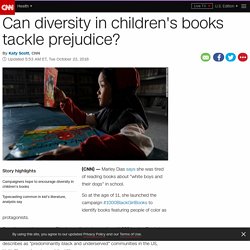
She is in the process of donating all the books and has given more than half to what she describes as "predominantly black and underserved" communities in the US, Haiti, Ghana, Jamaica and the UK. The young activist from New Jersey has even gone on to author her own book -- "Marley Dias Gets It Done" -- and is currently developing an app so kids can find "black girl books" more easily. "I hope that my campaign will mean more opportunities for our stories to be told and for books with black girls as the main character to be put on bookshelves worldwide," she tells CNN.
Yet despite the young writer's best efforts, statistics suggest "black girl books" are still in short supply. The Windows and Mirrors of Your Child's Bookshelf. We Need Diverse Books – weneeddiversebooks.org. Taking on Critical Literacy. Diverse Classroom Libraries for K-6 Classrooms. A Culturally Responsive Approach to Discussing Thanksgiving in the Classroom. In this ongoing series, we explore what culturally responsive teaching looks like at different grade levels and offer concrete examples and resources.
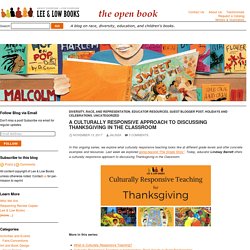
Last week we explored going beyond “The Single Story”. Today, educator Lindsay Barrett offers a culturally responsive approach to discussing Thanksgiving in the Classroom. Dimensions of Equity. Cultutally Responsive Teaching. Zaretta Hammond. Article- Making Connections: Culturally Responsive Teaching and the Brain. In reality, cultural responsiveness is more of a process than a strategy.
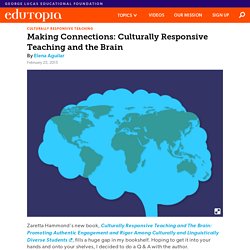
It begins when a teacher recognizes the cultural capital and tools students of color bring to the classroom. She is then able to respond to students' use of these cultural learning tools positively by noticing, naming, and affirming when students use them in the service of learning. The most common cultural tools for processing information utilize the brain's memory systems -- music, repetition, metaphor, recitation, physical manipulation of content, and ritual. The teacher is "responsive" when she is able to mirror these ways of learning in her instruction, using similar strategies to scaffold learning. For example, a science teacher I mention in the book wasn't having much success with her sixth-grade students learning the science vocabulary. Afterwards, learning weekly vocabulary was more active and game-like. Ted Talk-How students of color confront impostor syndrome.
Ted Talk- Chimamanda Ngozi Adichie: The danger of a single story. Missing Adventures: Diversity and Children's Literature. Classroom Library Assessment: How Culturally Responsive is Your Library? Teachers, let’s talk about a popular topic across education blogs and Pinterest: the classroom library.
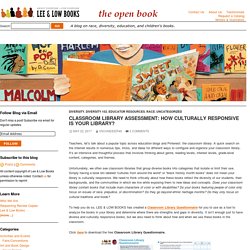
A quick search on the Internet results in numerous tips, tricks, and ideas for different ways to configure and organize your classroom library. It’s an intensive and thoughtful process that involves thinking about genre, reading levels, interest levels, grade-level content, categories, and themes. Unfortunately, we often see classroom libraries that group diverse books into categories that isolate or limit their use. Simply having a book bin labeled “cultures from around the world” or “black history month books” does not mean your library is culturally responsive. We need to think critically about how these books reflect the diversity of our students, their backgrounds, and the communities in which we live while exposing them to new ideas and concepts. Click here to download the free Classroom Library Questionnaire.
Book- Culturally Responisive Teaching and the Brain. 10 things every white teacher should know when talking about race. This week on the Truth for Teachers podcast: 10 things every white teacher should know when talking about race in the classroom Let’s start by addressing the elephant in the room–why I am talking only to white people?
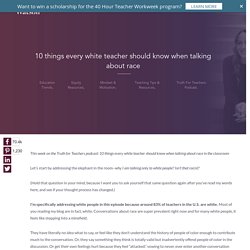
Isn’t that racist? Culturally Responsive Teaching: 4 Misconceptions. Four Ways Teachers Can Support Students of Color.